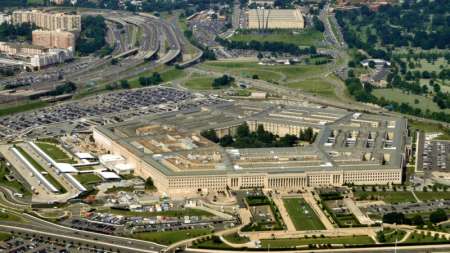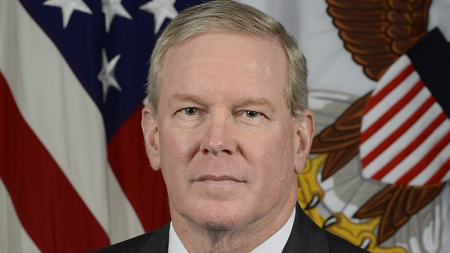The Department of Defense is splitting up and reorganizing its acquisition system in an effort to keep up with the times. A changing threat landscape and a new world order in how technology is developed, and business is conducted is behind the shift, according to DOD officials. […]
A recent study showing just how easy it is to hack into Internet of Things (IoT) devices–and to use that access to gain entrance to a larger network–focused on commercial products used in the home. However, it could serve as yet another wake-up call for the Department of Defense and other government agencies that are increasingly relying on IoT. […]
The Department of Defense (DoD) and contractor Cerner are coming off an eight week break in the initial deployment of what’s planned to be a worldwide health care records system. The team stopped work to address glitches in system performance and contend with negative user feedback. But officials in charge of the deployment of the MHS Genesis system said the pause was planned as part of the rollout, initial complaints were expected, and DoD still expects to complete the $4.3 billion system by 2022. […]
As Department of Defense (DoD) officials testified before the Senate last week on the Pentagon’s consolidated financial audit, John Gibson, the DoD’s chief management officer, spoke on the vast potential for shared services to improve department efficiency. […]
The Department of Defense (DoD) on Wednesday sketched out plans for a swift, multibillion dollar move to a comprehensive cloud infrastructure, while leaving a lot of the details to be filled in along the way. […]
The Defense Information Systems Agency (DISA) has completed the transition of the Secret Internet Protocol Router Network (SIPRNet) to a virtual network, which increases its bandwidth tenfold, while supporting plans to extend SIPRNet to the very edges of the network via the commercial cloud. […]
The accelerating cycle of technological advancements is reaching down into even small components that traditionally operated on low power and computational capacity, while performing a narrow, specific function. […]
New technologies and techniques are changing the cybercrime landscape in a significant way, creating new challenges for those entrusted with protecting networks and data. […]
Pentagon and allied leaders agree that future conflicts will likely take the shape of a “hyperwar” –a fast-paced clash guided via cyberspace and accelerated by artificial intelligence, but with real, even possibly nuclear, consequences. NATO’s most recent risk report, the GLOBSEC NATO Adaptation Initiative, states that the next world war could come as a hyperwar, and says North Korea, China, and Russia are working on the capability. Speakers on a panel at this month’s AFCEA West 2018 conference in San Diego agreed, emphasizing that the United States needs to keep up with technological developments being adopted by other countries, particularly with regard to artificial intelligence (AI). […]
With the passion of an evangelical, Deputy Defense Secretary Patrick Shanahan preached the Defense Department’s (DoD) “uncompromising” approach to cybersecurity last month at the AFCEA West conference in San Diego. And, his sermon included spreading the responsibility for cybersecurity to industry as a condition of winning contracts. […]
Reports like December’s White House IT Modernization Report sometimes seem like they impose requirements on agencies from above. Speaking at the ServiceNow Federal Forum in February, Danielle Metz, a policy advisor at DoD Office of Science and Tech Policy and contributor to the Modernization Report, gave us a look inside the kitchen to see how these reports come together. […]
Artificial intelligence has been applied to everything from cybersecurity and financial management to human resources and self-driving cars, so it seemed only a matter of time before it could take over video surveillance duties. And while AI, machine learning, and neural networks have made some promising strides in this area, it’s not quite the slam dunk that it might seem. […]
The Department of Defense’s (DoD) plan to accelerate adoption of commercial cloud computing saw an early result this month with the maximum $950 million contract worked out with REAN Cloud that lets DoD agencies buy cloud solutions and services directly from the company. The accelerated part of the equation resulted from the work of the Defense Unit Experimental (DIUx), which worked with REAN to enable prototyping and procurement of the full range of cloud requirements, contributing to the Other Transaction Authority (OTA) award. […]
Pentagon leaders say they’re serious about getting ahead in the artificial intelligence (AI) game, which increasingly could include the “games” involved in the modeling and simulation programs used for training. […]
The Pentagon and White House are chewing over what to do about fitness tracking apps, in wake of the news last week that a global heat map posted online by Strava could be used to identify the whereabouts and activities of military personnel, including those in conflict zones and other sensitive areas such as the halls of the National Security Agency. A heat map transforms data into a map in which values are represented by colors, which in this case includes the location of fitness trackers carried by government employees. […]
The Department of Defense (DoD) would like to get rid of the Common Access Card (CAC), but the problem–finding a suitable replacement. It turns out that the replacement won’t be one thing, but multiple biometric identifiers that combine to make out a person’s identity. […]
Contractor CSRA is set to launch the Defense Information Systems Agency’s (DISA) milCloud 2.0 on Feb. 1–three months ahead of schedule–combining a commercially run cloud offering within the confines of DISA’s data center. In its first phase, milCloud 2.0 will offer scalable Infrastructure as a Service (IaaS) to customers from two locations. […]
While the military services and other Department of Defense components get on board toward greater adoption of cloud services, the Defense Information Systems Agency (DISA) doesn’t want them to forget about security, particularly on the part of cloud providers. […]
The Pentagon, which is getting within range of being a $2 billion-a-day operation and has more than $2 trillion dollars in assets and liabilities, is notably undergoing its first full financial audit. […]
The Department of Defense (DoD) says it’s getting ready for the big one, but in this case, it’s not talking about a kinetic attack measured in megatons. It’s referring to a cyberattack measured in terabits. […]
Who says things in Washington don’t move quickly? A decade after Congress initially authorized the position; the Pentagon will get its first Chief Managing Officer (CMO). John Gibson, the current Deputy Chief Managing Officer (DCMO), will step in as the first DoD CMO in February. A major target for new efficiencies, DoD has more than $2 trillion in assets and liabilities. […]
Russian hackers might get all the attention these days, but the Department of Defense (DoD) hasn’t forgotten about WikiLeaks and Edward Snowden. […]
The Department of Defense (DoD) caused a slight disturbance in the Force the other day when it pulled back an announcement related to its cloud computing initiative over some Star Wars-related acronyms. The memo announced the creation of the Central Cloud Computing Program Office, which would go by the acronym C3PO, and would support the Joint Enterprise Defense Infrastructure (JEDI) Cloud, Bloomberg reported. The memo was scrubbed of the Star Wars references and reissued. […]
In 2015, Defense Department (DoD) contractors that handle sensitive DoD information were given extra time to comply with new department cybersecurity regulations. That grace period now is up, and companies must meet these requirements in 2018. […]
President Donald Trump last week issued an Executive Order on veterans’ health care that included an announcement that the Department of Veterans Affairs (VA) would adopt the same electronic records systems as the Department of Defense (DoD), signing off on what was already a done deal. Emphasis on “deal,” because although the departments are on board with a project that could cost $10 billion over 10 years, history raises doubts as to whether a unified health records system can actually be achieved. […]
The Pentagon, well aware that private sector innovation has outstripped its own in key technologies, is expanding its courtship of industry with a new pilot program that encourages academic industry collaboration on what its calls “use-inspired basic research.” The program will concentrate on development projects aimed at creating applications that can be implemented in the field. […]
The Department of Defense’s (DoD) push toward greater adoption of commercial cloud computing could raise some questions for the military services and component agencies, including what type of cloud environment would work best while meeting unique DoD needs such as security and high-volume transactions. The Defense Information Systems Agency (DISA) took a stab at answering those questions last week while offering a plan for enterprise cloud adoption. […]
After years on the backburner, electronic warfare (EW) is moving up the ranks as an integral part of the Pentagon’s military focus. The Army last month received approval to move ground-based EW efforts into the Terrestrial Layer Intelligence System, joining cyber, signals, and other intelligence as part of the Multi-Function Electronic Warfare (MFEW) structure. The service wants to include airborne EW later this year. […]
The Intelligence Community wants to develop a kind of universal translator that will search documents across a full range of media and make sense of them for English-speaking analysts. […]
The White House wants to clear the way for Federal agencies to adopt commercial cloud computing, even if that means tweaking acquisition rules to help them get there. […]


























